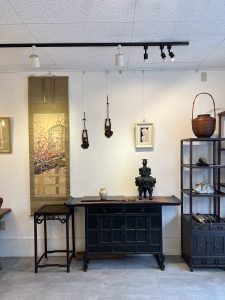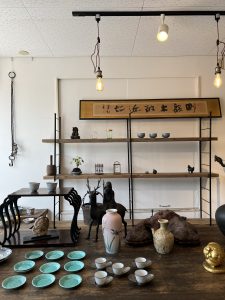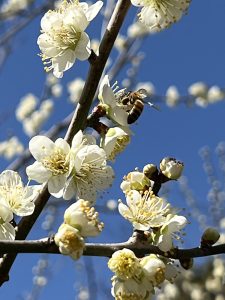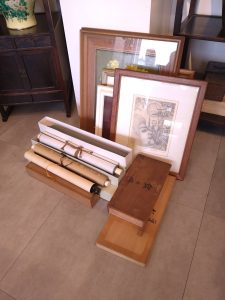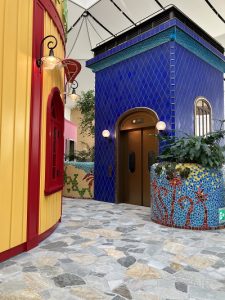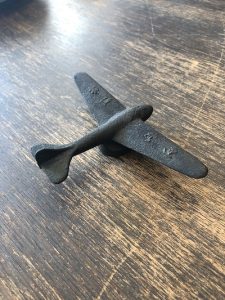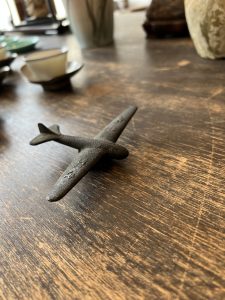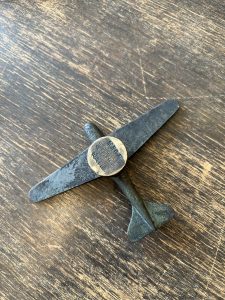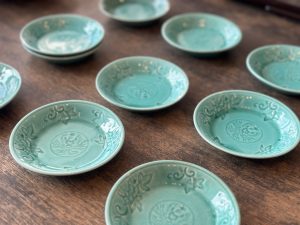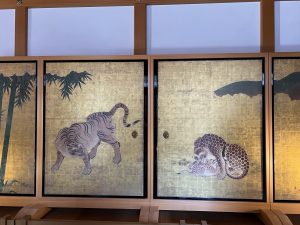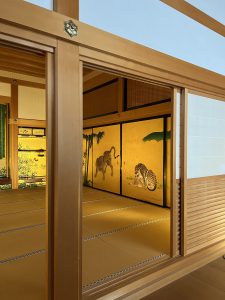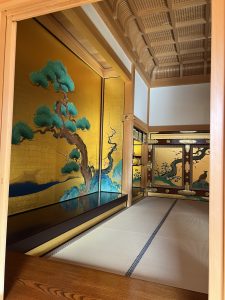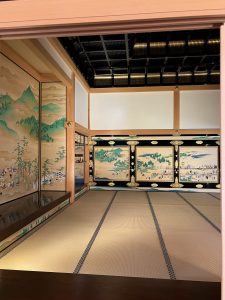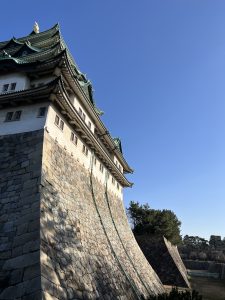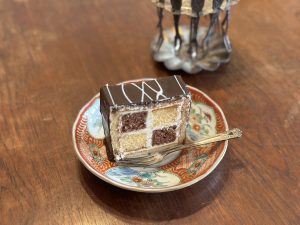皆さま、こんにちは。スタッフNでございます。
先日、夜に迷子犬を見かけまして、飼い主が困っているかもしれないと近づいたら、なんと狐でした。
野生の狐を初めて見たのでとても驚きましたが、縁起がいいことだそうです。
ひとつは「直感を信じなさい」というメッセージ、そして相反するように「うまい話に騙されてはいけない」というメッセージでもあるのだとか。
実は、こうしたほうがいいかな?と考えていたことがありまして、このタイミングだったので、直感を信じろというメッセージだと思うように致します。
幸運が舞い込むという話でしたが、今日は色々ついてない日でございました。

先ほどおいしそうなタコライスのお店を見つけまして、お昼ご飯にしようとお店に入りましたら、支払いが現金のみで買えませんでした。
仕方なく近くのカレー屋さんに入ったのですが、店員のおじさんの態度がとても悪くすぐ帰ってきました。
なぜかわからないけど、イライラしてしまう、ついてないような気がする日もありますよね。
結局いつものお店で買ったのですが、いつもはできる電子マネーができずに時間がかかったり、今日はいろいろなことがありそうです。
たぶん連勤と寒さと、疲れと睡眠不足のせいだと思いますが、無理はいけませんね。
きっと同じ思いをしている人がいるかもしれないと思い、ストレスについて調べてみました。
イライラを解消する方法はたくさんございます。
- 深呼吸して気持ちを落ち着ける
- ストレッチでリラックスする
- 親しい人と話す
- たくさん笑う
- 自分の好きなものを食べる
- 噛むことで脳を刺激する
- 太陽の光を浴びる
- 趣味に没頭して日常を忘れる
深呼吸とストレッチは今すぐできそうです。
3番は、昨日のR-1の録画をまだ観ていないので帰ってから観て、たくさん笑いたいです。
5番は、もうすぐNの好きな久世福の海苔バターが届くのでそちらを楽しみにしております。
6番はガムでしょうか?そういえば昔の職場でいつもイライラしている男性がガムを噛んでいたのを思い出します。
今まさにこの前買ったガムが、どんどん口の中に消えていきます。
後でお腹が痛くならないか心配です。
イライラの原因は、糖分の多い清涼飲料水やお菓子類の取り過ぎでインスリン分泌の乱れから生じる低血糖や、空腹時のブドウ糖不足によるイライラ、ビタミンCの不足がイライラを招くこともあります。
バレンタインからチョコやお菓子をいただく機会が多く、気づけば毎日何かしらの糖分をとっていたような気がします。
我慢すればいい話なのですが、目の前にあるとついつい食べてしまうんですよね。
昨日のスタッフMのブログの写真のケーキも美味しくいただきました、ありがとうございます。
他にも、繊細さによって余裕がなくなっていたり、精神的・身体的疲労によってストレスが溜まっていたりすると、精神のコントロールができなくなって冷静な視点で考えられなります。 また、自信がないというのも短気になってしまう原因の一つにあります。
- キャパシティーが少ない
- 思い込みが激しい
- 完璧主義
- 精神的に余裕がない
- 人に頼ることが苦手
などなどいろいろ原因はございます。
気分が良いとき、知らず知らずのうちに鼻歌を歌っているという方もいらっしゃると思います。
身近にある音楽は、怒りの感情をコントロールする際にも活用できるのだとか。
怒りのピークは長くても6秒と言われており、この怒りのピークを切り抜ける際に効果的なのが、好きな曲のサビを思い出すことだそうです。
このほかに、ゆっくり6秒数えるといった方法もあるそうです。
ちなみにストレス解消kの曲で調べてみますと
Ado うっせぇわ
B’z ultra soul
などが出てきました。
個人的にはサンボマスターがいいのではないかと思います。
次に目の前の物を観察する方法があります。
未来や過去ではなく、今この場所のことだけを考えて、怒りから意識をそらします。
たとえば、目の前に花が飾ってあったら『花びらは8枚だ』『オレンジ色に近い黄色だ』『ガラス製で重そうな花瓶だな』といったことを考えるそうです。この手法を『グラウンディング』と言います。
グラウンディングを行なう際に観察するものは、机に置かれたカップや持っているペンなど、なんでもかまいません。
数や色、材質や温度など、見慣れたものであっても、意識を釘付けにしてみると意外に考えるネタがあります。
そうして怒りから目をそらせば、怒りの感情が膨れ上がるのを防ぐことができます。
スマホの情報を見るよりも、怒りの感情と関係ない、目の前の無機質なものに意識を向けるのがおすすめだそうです。
自分との会話で頭を切り替える
映画や漫画の中で、登場人物が困難な状況に陥ったとき、「私ならできる」「これくらいいつも乗り越えてきた」などとひとりごとを言って自分を鼓舞する場面が、割とよくあります。
なんとなく「フィクションだから」「コミカルな演出でしょ」と考えがちですが、実はこれも怒りを切り抜けるのに有効なテクニックだそうです。
キレそうになったら、自分との会話で頭を切り替えます。
自分を落ち着かせる、あるいは励ますフレーズを口にしたり、頭の中でつぶやいたりすることで、怒りが増幅するのを防ぐことができます。
気分が落ち着く、または勇気づけられるフレーズであれば、言葉は何でもかまわないそうです。
新世紀エヴァンゲリオンの主人公、碇シンジくんが「逃げちゃだめだ、逃げちゃだめだ、逃げちゃだめだ・・・」と繰り返し自分に言い聞かせる有名なシーンがありますよね。
自分がシンジくんになったつもりで「キレちゃだめだ、キレちゃだめだ、キレちゃだめだ・・・」と言い聞かせるのもいいかもしれません。
イライラしたときには「大丈夫、大丈夫」「何とかなるさ」「落ち着いて」のほか、恋人やペットの名前でもいいそうです。
細田守監督の「おおかみこどもの雨と雪」で、雪が人前で狼にならないように「おみやげみっつ、たこみっつ」と言って胸をとんとんと3回たたくシーンがあります。
何かあった時のために自分でおまじないを決めておくのはいいかもしれません。
自分を励ますフレーズなら「絶対にいける!」「ここを切り抜ければもっと伸びる」「後々で経験になることを今体験しているんだ」など、気持ちを盛り上げる力強い言葉を選ぶといいそうです。
少し話がそれてアンガーマネジメントの話になってしまいましたね。
すぐ取り入れられる、イライラを抑える食べ物についても調べてみました。
おすすめの飲み物は、「ホットココア」や「チョコレート入りのホットミルク」だそうです。
精神を安定させる「トリプトファン」や、一緒に摂るとストレス緩和に効果を発揮する「カルシウム」と「マグネシウム」が摂取できます。
Nも純ココアにハマっていた時期がありまして、マヌカハニーをいれて冬に飲んでおりました。
知り合いの男の子で、イライラして物を投げてしまう子がいるのですが、その子がいつもコーラやファンタを飲んでいるので、糖質の摂りすぎもよくないのだろうなと思ったことがあります。
バナナや卵、乳製品などに多く含まれるトリプトファン。h、体では作れない必須アミノ酸の一つで、“幸せホルモン”と呼ばれる「セロトニン」の材料になります。
セロトニンは気持ちを安定させる効果があり、メンタルの健康には欠かせません。
レモン・みかんなどの酸味のある食材も、イライラを落ち着かせる効果があります。 柑橘系の香りは、食べ物と同じように気の巡りをよくしてくれます。 食べ終わったみかんやレモンの皮を部屋においたり、お風呂にいれるのもいいでしょう。
Nは柑橘系の香りが大好きなので、本能的に癒しを求めているのかもしれません。
皆さま、自分にあったストレス解消方を見つけて、穏やかに過ごせたらいいですね。
まずは、身の回りのいらないものを整理して、気持ちをすっきりさせるのはいかがでしょうか?
古美術風光舎がお片付けのお手伝い致します。
ではでは
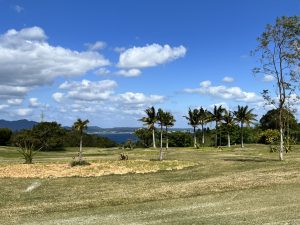
Hello everyone. I am Staff N.
The other day, I saw a stray dog at night, and when I approached it thinking that the owner might be in trouble, it turned out to be a fox.
I was very surprised to see a wild fox for the first time, but it is said to be auspicious.
One message is “Trust your intuition” and the other is “Don’t be fooled by good news”.
Is it actually better to do this? I’ve been thinking about it, and since it was this timing, I will try to think of it as a message to trust my intuition.
It was a story that good luck will come, but today was an unlucky day.
I found a taco rice shop that looked delicious earlier, and when I entered the shop to have lunch, I couldn’t buy it because the payment was cash only.
I had no choice but to enter a nearby curry shop, but the clerk’s uncle had a very bad attitude and returned immediately.
I don’t know why, but there are days when I feel frustrated and unlucky.
In the end, I bought it at my usual store, but I couldn’t make electronic money, which I usually do, and it took a long time.
I think it’s probably because of the long working hours, cold weather, fatigue and lack of sleep, but I can’t help it.
I thought there might be someone who felt the same way, so I researched about stress.
There are many ways to get rid of frustration.
take a deep breath to calm yourself down
relax by stretching
talk to someone close
laugh a lot
eat what you like
Chewing stimulates the brain
bask in the sun
Immerse yourself in your hobby and forget your daily life
Deep breathing and stretching seems to be possible now.
For number 3, I haven’t watched yesterday’s R-1 recording yet, so I want to watch it after I get home and laugh a lot.
As for No. 5, N’s favorite Kuzefuku seaweed butter will arrive soon, so I’m looking forward to that.
Is number 6 gum? When I think about it, it reminds me of a man in my old workplace who was always irritated chewing gum.
The chewing gum that I bought just the other day is disappearing in my mouth more and more.
I’m worried that my stomach will hurt later.
Irritation can be caused by hypoglycemia caused by the disturbance of insulin secretion due to excessive intake of soft drinks and sweets with a lot of sugar, irritability due to lack of glucose during fasting, and lack of vitamin C.
Since Valentine’s Day, I’ve had many opportunities to receive chocolates and sweets, and before I knew it, I felt like I was eating some sort of sugar every day.
It’s a story that you can endure, but if you have it in front of you, you’ll just eat it.
The cake in the photo of staff M’s blog yesterday was also delicious, thank you very much.
In addition, if you have no leeway due to sensitivity, or if you are stressed due to mental and physical fatigue, you will not be able to control your mind and think from a calm perspective. Lack of self-confidence is also one of the causes of short temper.
low capacity
hard to believe
perfectionism
mentally exhausted
I don’t like to rely on others
There are many other reasons.
When you feel good, you may find yourself humming a tune without realizing it.
It is said that familiar music can also be used to control angry emotions.
It is said that the peak of anger is six seconds at the longest, and remembering the chorus of your favorite song is an effective way to overcome this peak of anger.
Another method is to slowly count to 6 seconds.
By the way, if you look it up with the stress relief k song,
Ado Uusewa
X JAPAN Beni
B’z ultra soul
etc. came out.
Personally, I think Sambomaster is better.
Another way is to observe what is in front of you.
Distract your anger by thinking only about the here and now, not the future or the past.
For example, if there is a flower in front of you, you may think “It has eight petals,” “It’s yellow, almost orange,” and “It’s a glass vase that looks heavy.” This technique is called “grounding”.
The object you observe while grounding can be anything from a cup on your desk to a pen in your hand.
Even familiar things such as numbers, colors, materials, and temperatures can surprise you when you pin your awareness down.
By turning your eyes away from anger, you can prevent anger from building up.
Rather than looking at the information on your smartphone, it is recommended to turn your attention to the inorganic things in front of you that have nothing to do with your anger.
change one’s mind in a conversation with oneself
In movies and comics, when a character finds himself in a difficult situation, he often tells himself something like, “I can do it,” or “I’ve always overcome it.”
Somehow I tend to think that it’s “fictional” or “it’s a comical production”, but in fact this is also an effective technique to overcome anger.
If you get angry, change your mind by talking to yourself.
You can prevent your anger from building up by saying calming or encouraging phrases or mumbling them in your head.
It doesn’t matter what words you use, as long as it’s a calming or encouraging phrase.
There is a famous scene in Neon Genesis Evangelion where the main character, Shinji Ikari, repeats to himself, “Don’t run away, don’t run away, don’t run away…”.
It might be a good idea to pretend to be Shinji and tell him, “You can’t go mad, you can’t go mad, you can’t go mad…”.
When she gets irritated, she says, “It’s okay, it’s okay,” “It’ll work out,” “Calm down,” or even the name of your lover or pet.
In Mamoru Hosoda’s “Wolf Children’s Ame and Yuki,” there is a scene where Yuki thumps her chest three times, saying “Omiyage Mitsu, Tako Mitsu” so that she doesn’t turn into a wolf in front of people.
It might be a good idea to decide your own charm in case something happens.
If you want to use phrases to encourage yourself, choose powerful words that will make you feel better, such as “I can definitely do it!”
We digressed a little and got to talking about anger management.
I also looked into foods that can be incorporated immediately and suppress irritation.
Recommended drinks are “hot cocoa” and “hot milk with chocolate”.
You can take tryptophan, which stabilizes the mind, and calcium and magnesium, which are effective in relieving stress when taken together.
There was a time when N was addicted to pure cocoa, and I drank it in the winter with manuka honey.
I know a boy who gets irritated and throws things, but he always drinks Coke or Fanta, so I thought that too much sugar wasn’t good for him.
Tryptophan is abundant in bananas, eggs, and dairy products. h.It is one of the essential amino acids that cannot be produced by the body, and it is a material of “serotonin” called “happiness hormone”.
Serotonin has a stabilizing effect and is essential for mental health.
Acidic ingredients such as lemons and mandarin oranges also have the effect of calming irritation. The scent of citrus fruit will improve your mood in the same way as food. It’s also a good idea to leave the tangerines and lemon peels you’ve finished eating in your room or take a bath.
N loves citrus scents, so it may be that he instinctively seeks healing.
I hope everyone finds a way to relieve stress that suits them and spend their time peacefully.
First of all, why don’t you organize the things you don’t need around you and clear your mind?
Antique Fukousha will help you clean up.
See you soon
********************
ご実家の整理やお片付けなどをされている方のご相談などが多くございます。
これから春に向かってお片付けを検討されていらっしゃる方も。
生前整理、遺品整理、家じまい、実感じまい、お片付けなど
季節のよいこの時期にお片付け初めてみてはどうでしょうか。
古美術風光舎では、これらの際のお困りごとお悩み事など、些細なことでも
ご相談うけたまわっております。
風光舎では古美術品や骨董品の他にも絵画や宝石、趣味のお品など様々な
ジャンルのものを買受しており、お片付けをされていて、こういうものでも
いいのかしらと迷われているものでも、どうぞお気軽にご相談下さいませ。
また風光舎は、出張買取も強化しております。ご近所はもちろん、愛知県内、岐阜県、
三重県その他の県へも出張いたします。
まずは、お電話お待ちしております。
愛知県名古屋市千種区姫池通
骨董 買取【古美術 風光舎 名古屋店】
TEL052(734)8444
10:00-17:00 OPEN
#高価買取#無料査定#出張費無料#お片付け#生前整理#遺品整理#古美術#骨董#ご相談ください

